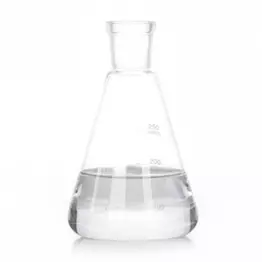IUPAC Name
Butyl Acetate
Cas Number
123-86-4
HS Code
2915.33.00
Formula
C6H12O2
Appearance
Transparent Liquid
Common Names
Butyl Ethanoate
Packaging
180 KG Metal Drum
Brief Overview
Butyl acetate, also called butyl ethanoate, is an organic compound with medium volatility and a characteristic fruity ester odor. It is found in many types of fruit, where, along with other chemicals, it imparts characteristic flavors and has the sweet scent of banana or apple. Butyl acetate is a medium-boiling ester solvent. It is highly flammable and miscible with all common organic solvents, but has only slight miscibility in water. Butyl acetate is volatile in the atmosphere and undergoes photochemical oxidation reactions with hydroxyl radicals and chlorine atoms.
Manufacturing Process
The esterification of butanol and acetic acid results in the formation of butyl acetate, with sulfuric acid serving as the catalyst. The removal of water through azeotropic separation drives the reaction to completion. Subsequently, the acid catalyst is neutralized, and the ester undergoes purification via distillation.
Food Industry
Butyl acetate occurs naturally in bananas and related fruits and is produced and emitted during fermentation. It has also been found in a wide variety of food products. It is used as a synthetic fruit flavoring in foods such as candy, ice cream, cheeses, and baked goods.
Coating Industry
Butyl acetate mainly used as a solvent in lacquers, inks, adhesives and a thinner in the production of nitrocellulose lacquers. It is also used in the manufacturing of high-polish lacquers and varnishes, photographic film, nail polish removers, oils, fats, vinyl resins, waxes, and camphor.
Pharmaceutical Industry
Due to its low solubility in water, butyl acetate is used as extraction solvents for fine chemicals, particularly for certain antibiotics. They are also used as a chemical intermediate to manufacture, synthetic flavourings, cleaners, and other organic compounds. Butyl acetate is a good solvent for a broad range of resins as they are miscible with almost all common organic liquids.
Paint Industry
It is used as a solvent as it gives excellent color levelling and gloss factor. It helps the paint spread evenly and smoothly over a surface, resulting in a more even finish and reducing defects like brush marks or orange peel texture.
